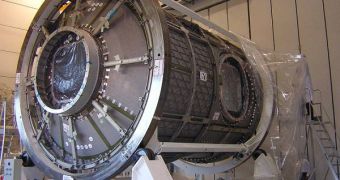The Torino, Italy-based aeronautics company Thales Alenia Space, the main constructor of the new International Space Station Node 3 module, dubbed Tranquility, has recently announced the completion of the work. The new segment was scheduled to be delivered to the American space agency NASA as soon as possible, so that it could begin preparations to launch it to the ISS in February 2010, aboard the space shuttle Endeavor. Until then, the newly finished module will rest at the Kennedy Space Center in Florida, where it will undergo a number of tests and diagnostics that will assess its condition.
“We still have growth opportunities. If someone wanted to bring another module to orbit, they could – and our Russian friends do have another couple of modules they are proposing. But the key for us all in the partnership is to concentrate now on utilization,” Mike Suffredini, who is NASA's space station manager, told the BBC News. He has recently traveled to Turin, in order to officially receive the module from its Italian builder.
The endeavor spaceflight will also carry into orbit the Cupola, a large observation post constructed in Europe as well. Its windows will provide astronauts aboard the ISS with a 360-degree view around the facility, which will make scientific experiments and docking procedures a lot easier. The Cupola will be attached to one of the Earth-facing ports on Tranquility, as the new module has several such utilities at its disposal. The reason why so many ports were added is because mission planners thought that additional modules and capsules could dock to the ISS in the future.
The capsule shared its clean room with the Automated Transfer Vehicle (ATV) Johannes Kepler, but they parted ways on Sunday, when Node 3 was transported to the KSC using an Airbus Beluga transport plane. Once arrived there, it joined its travel “partner,” the Cupola, which has already been delivered. The two European-built components were constructed for NASA in a barter agreement, which saw the American side delivering Europe's Columbus science laboratory to orbit in exchange for Connecting Nodes 2 and 3. The European Space Agency (ESA) also has to continue sending unmanned spacecraft like the Kepler to the ISS, so that it can earn places on the station for its astronauts.

 14 DAY TRIAL //
14 DAY TRIAL //